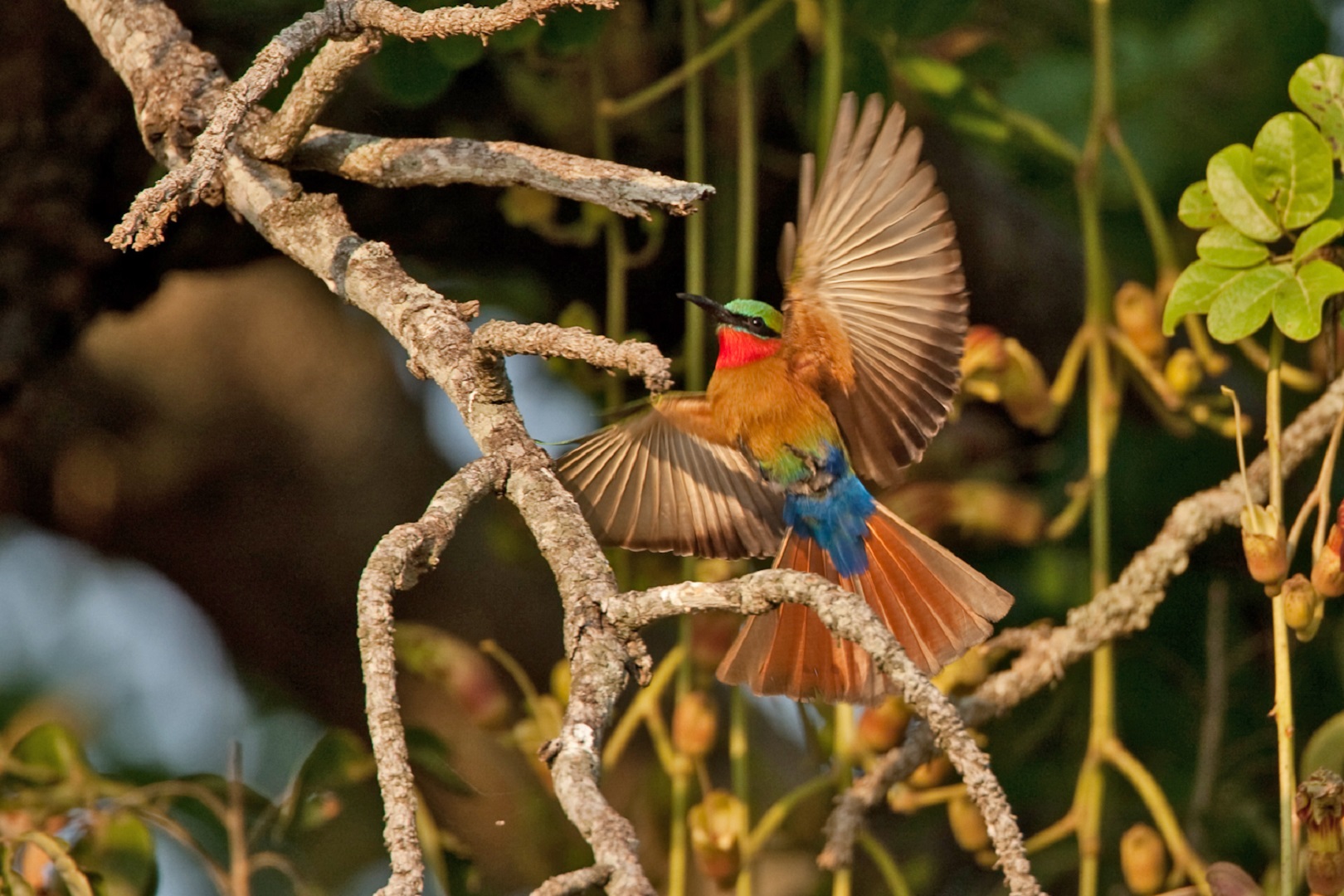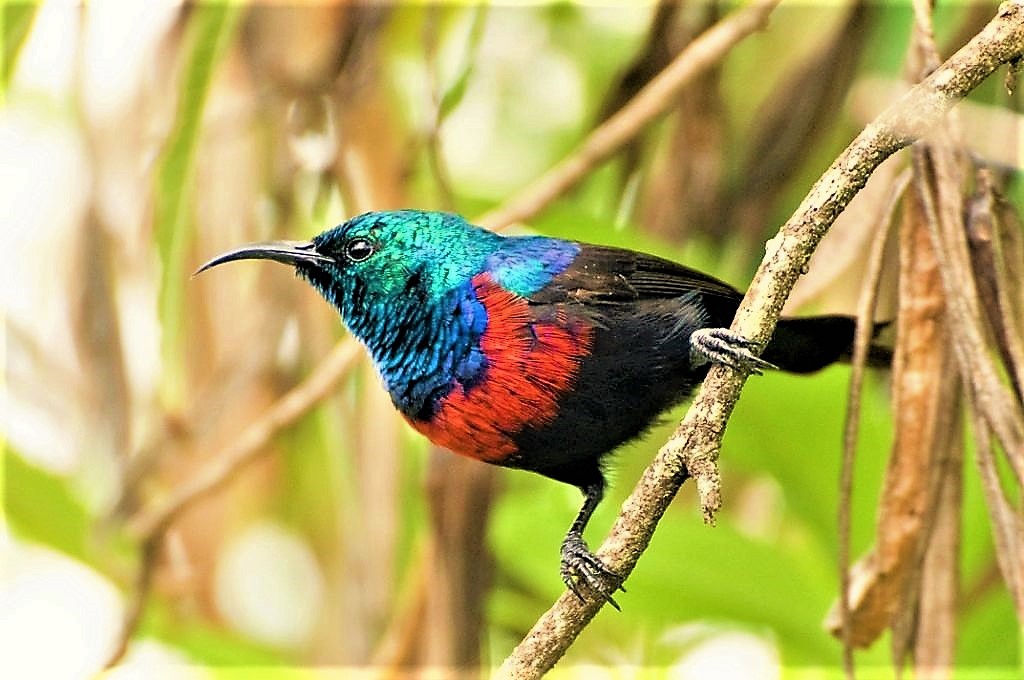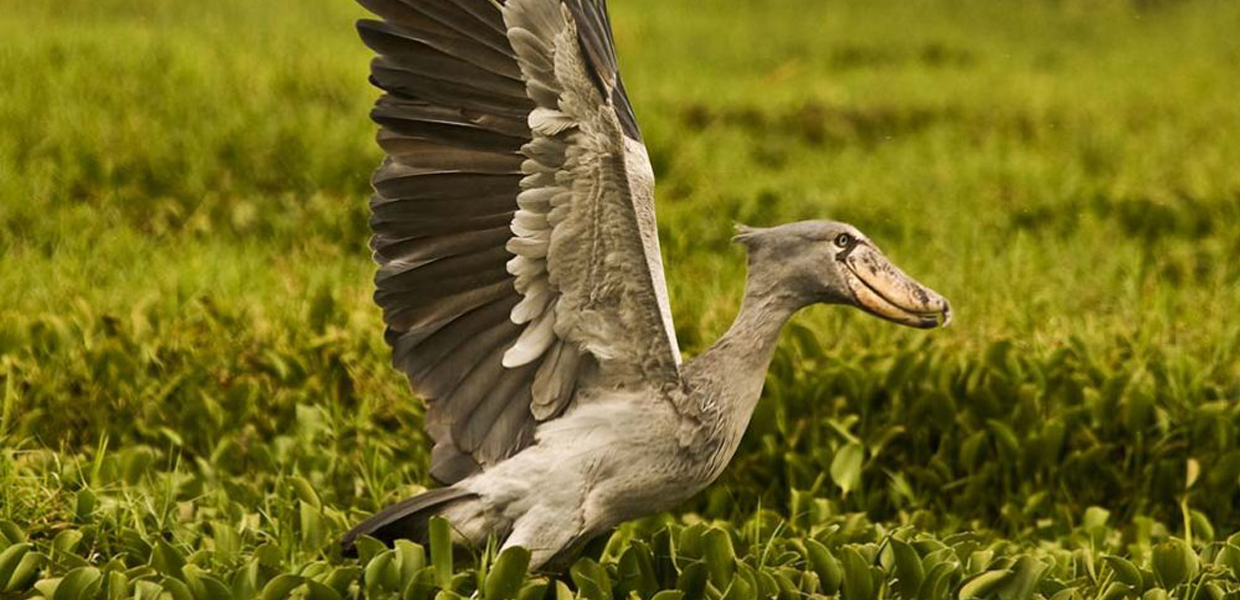There are quite a number of bird species in Semuliki National Park, and it would be interesting to learn that this forest park is a haven to more than 441 bird species. These include the Albertine rift endemics, due to a band of different vegetation zones forming habitats for birds.

The 441 bird species represent 40% of Uganda’s total bird species and 66% (216) of the country’s forest bird species. The list is expanded by the riverine habitat and a fringe of grassland in the east of the park.
There are numerous rarities, 46 Guinea-Congo biome species are found nowhere else in East Africa while another 35 can be seen in only two or three other places in Uganda. Of these, five species are endemic to the Albertine Rift ecosystem.
Among the bird species to look out for in Semuliki include; the Nkulengu Rail and Yellow-throated Cuckoo. A variety of hornbills including Piping Hornbill, Red-billed Dwarf Hornbill, Black Dwarf Hornbill, White-crested Hornbill and Black-casqued Wattled Horbill.
Others include the Red-rumped Tinkerbird, African Piculet, White-throated Blue Swallow, Yellow-throated Nicator, Leaf-love, Swamp Palm Bulbul and Lemon-bellied Crombec. Birders won’t miss out on Maxwell’s Black Weaver, Crested Malimbe, Red-bellied Malimbe, Blue-billed malimbe, Chestnut-breasted Negrofinch and Orange-cheeked Waxbill, among others.
Birdwatching Experience in Semuliki National Park

There are good chances to spot rare and colorful bird species especially if you are looking for some Albertine rift endemics, eastern Congo forest birds, and Afro-tropical highlands biome bird species. Visitors searching for top birding destinations in Uganda only need packed lunch, a field guide book and good binoculars to spot their favorite species.
Many birders identify birds by their calls, so you may take a guided birding tour with a local tour guide. Hire a guide to lead you along the Kirumia trail or choose from other shorter birding trails.
Among the 441 birds estimated to live in the park, the most pursued species include Rwenzori Batis, Rwenzori nightjar, regal sunbird, Rwenzori Turaco, Red-faced woodland warbler and Stonechat among other species.
Some of the bird species you can spot include the Rwenzori turaco, kivu ground thrush, Regal sunbird, handsome Francolin, crowned hornbills and montane Sooty babou. The chubb’s cisticola, olive woodpecker, western green tinker bird and African hill babblers are just a glimpse of other species.
The best bird-watching trails in Semuliki National Park include the Kirumia trail walk, Wasa River trail and Sempaya nature trail. All these offer beautiful sightings of the Regal Sunbird, Bronze Sunbird, Brown-crowned Tchagra, Blue-headed Sunbird, Black-headed Waxbill, Dusky turtle Dove, Rwenzori Batis, Cape Robin-chat, Olive Thrush and Streaky Seedeater among others.
Tourists considering visiting Semuliki National Park for bird watching should book in advance. They should carry their own gadgets like binoculars, cameras, and wear long-sleeved shirts, long trousers, rain jackets and waterproof hiking boots.
Best time to see Bird Species in Semuliki National Park

Birding in Semuliki can be conducted all year round, but the perfect time is the wet season from early March to Mid-May and then September to November. This is because it is the breeding season for the birds so, you will be rewarded with sightings of numerous bird species.
The best months for seeing the migratory bird species are from November to April. The Shoebill is the park’s most outstanding attraction though rare but can be spotted from January to March during the dry season. Remember, migratory birds can be seen between months November and April.
Besides Semuliki National Park, birders can satisfactorily enjoy birding experiences in other destinations such as Kibale Forest National Park and Bwindi Impenetrable Forest.
